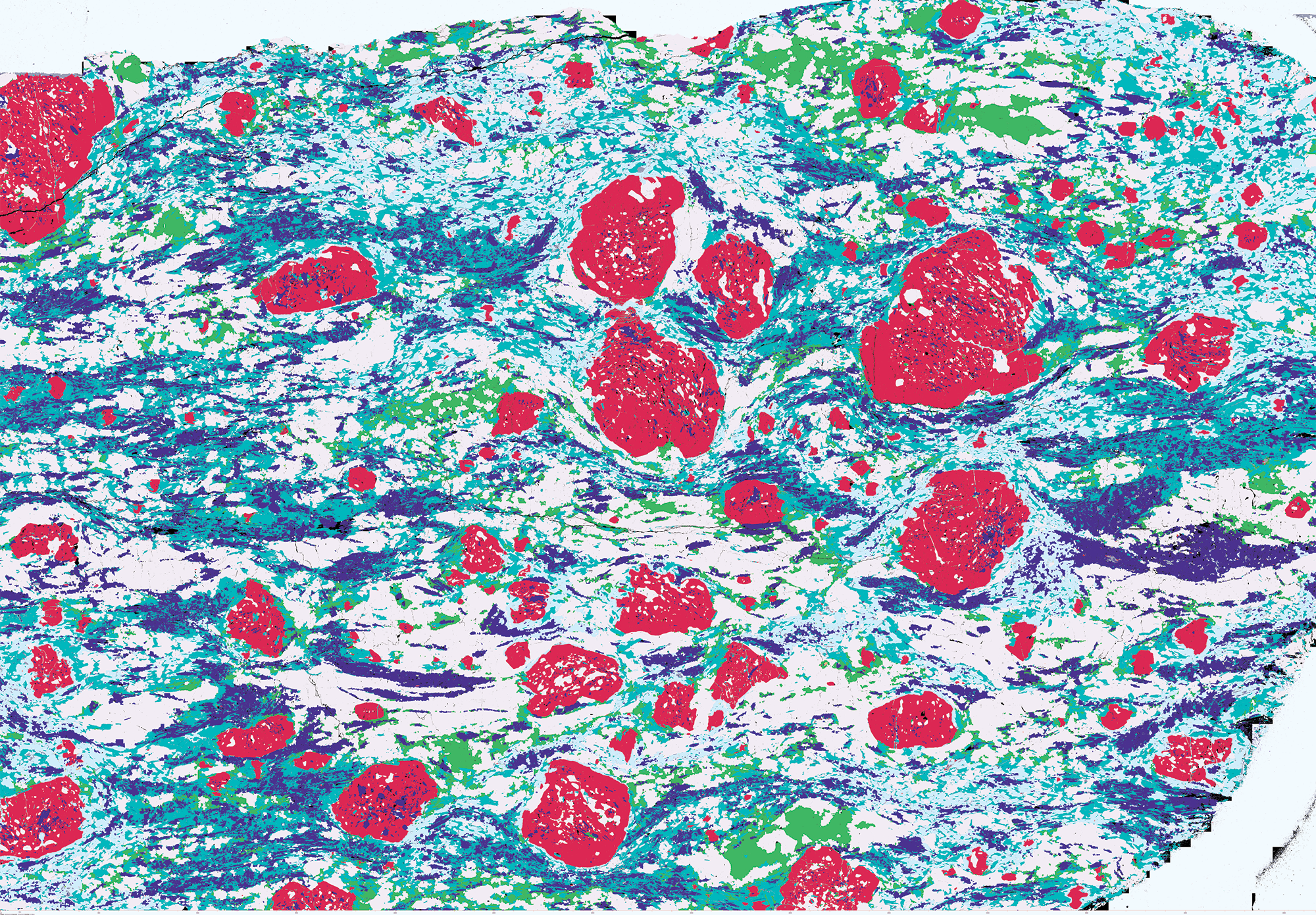Critical mineral and energy resources are found in ancient geological deposits. Dating these rocks to understand how and when they formed is vital to discover and utilise these resources. Many important minerals can’t be dated using traditional methods based on uranium–lead decay because they don’t contain these elements. There is therefore a need for alternative and complementary dating techniques to expand our ‘tool box’ for resource exploration.
Dr Sarah Gilbert from Microscopy Australia’s University of Adelaide facility has been working with University researchers and the MinEx Cooperative Research Centre (CRC) to develop innovative techniques for dating ‘difficult-to-date’ minerals such as garnet (red in below image), apatite, carbonate, micas, feldspars and some clays. It also allows the dating of minerals present as a result of earlier fluid transport in rocks. This is important knowledge for finding gold and other metal ores.

Mineral map identifying the location of
garnets (red) for dating with the new techniques. Image collected by Samantha March.
The new laser ablation collision cell ICP mass spectrometer techniques Dr Gilbert has developed, are the first to date non-uranium bearing minerals where they sit within the rock. Minerals are first identified within a slice of rock using the NCRIS-supported Automated Mineralogy scanning electron microscope (left image). They are then dated using either the ratio of rubidium to strontium (Rb–Sr) or lutetium to hafnium (Lu–Hf). Dating using these isotopes normally requires rock samples to be ground up and the mixture of minerals dated using solution mass spectroscopy techniques. Seeing where minerals, with potentially different ages, are located within the rock sample, provides a more detailed understanding of its geological history.
Industry partners include the MinEx CRC, Geological Surveys of NT and WA, SA Department of Energy and Mines, and many mining companies including BHP, Teck and Santos. Companies from around the world are now also reaching out to our Adelaide facility to access this exciting new technology.
Australian and international exploration companies now have a practical, fast and cost-effective approach to finding the age of ore deposits and associated sedimentary, igneous and metamorphic rocks.
The data generated by this new technique is providing companies with extremely valuable information, building a picture not seen before. This will allow a far greater understanding of existing deposits and help to explore new deposits in a more informed and targeted way.
These developments support exploration and the urgent need to discover critical minerals required both for electric vehicles and advanced manufacturing as we transition to a more sustainable future.
Array
February 1, 2023